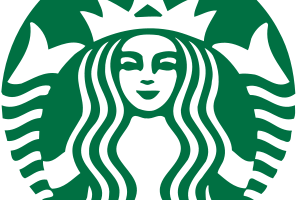Connectivity and Coffee

Starbucks is able to maintain its massive global position by investing in digital technologies like free wifi and a customer loyalty app
The origins of drinking coffee date to the 15th century in Yemen. By the 16th century, fueled by caffeine, merchants had spread the practice across the majority of the world. Five centuries later, fueled by the digital age, Starbucks has similarly spread across the world. After six centuries of coffee connoisseurs perfecting the art of brewing coffee, how was a company able to grow and sustain 22,551 stores in 65 countries? With so many ways to brew coffee inexpensively at home, how do they manage to convince consumers to shell out over $16B annually in exchange for arguably mediocre lattes? The answer is that Starbucks has embraced the digital age in a way that enables them to be exceedingly convenient – a quality that is of utmost importance when dealing with pre-caffeinated consumers.
Wi-Fi
It is a fixture in countless movies – the eccentric author sitting in a coffee shop, crafting what he hopes to be the next great novel, a cappuccino beside his notebook. This scene could occur in any coffee shop in the world, but the advancing digital age has given Starbucks an edge in this type of consumer. Nowadays, this writer is sitting on his laptop crafting the next great tweet or blog post, necessitating a reliable internet connection. The rise of internet businesses and telecommuting has also increased the number of employees who work remotely and need both a strong cup of coffee and a wifi signal to get work done. By investing in wireless networks in their stores across the globe, Starbucks has essentially become a B2B partner to all of these businesses and workers.
Similarly affected by the digital age, consumers are demanding connectivity at all times. Even when traveling to developing countries, they expect to be able to post to Facebook, share photos on Instagram, Skype with their mom, and book new travel at all times. With its massive global presence, no entity is a more pervasive, consistent symbol of free wifi as Starbucks. Coupled with a globally standardized menu, Starbucks becomes the obvious choice for a drink and internet signal anywhere in the world.
Starbucks App
In 2011, Starbucks launched its app that served as both a digital payment platform as well as a customer loyalty program. By loading value onto a digital card within the app, customers are able to use their smartphone to make payments in stores rather than having to bring a wallet. Purchases translate into loyalty points, known as stars, which lead to free products over time. Together with the ability to auto-reload the card, this seamless payment and loyalty system becomes very sticky to consumers. By enabling tipping and receipts via the app, they create an even more frictionless experience that reduces costs for the company.
Starbucks made some great strategic decisions during its main growth phase in the early to mid 2000’s to become a massive global chain, but the prioritization of digital enhancements in recent years has set it up to retain customers in the face of continuous competition.



Great piece on a company that is leading consumer digital innovation and integration with customer experiences. It would be interesting to explore how Starbucks thinks about marketing through their app offerings and the revenue it drives as the company appears to only offer rewards that are technically earned for a limited amount of time. In addition, the company could improve its integration with the loyalty program and POS system since you often need to tell the barista of a reward even if you are paying with your own Starbucks app. While I believe Starbucks has won with digital innovation and integration, I still believe they need additional work in digital marketing and engagement with the consumer in areas such as Facebook, Instagram and Twitter.
Another interesting note: recently in San Francisco at a Starbucks location, I’ve noticed that they had these wireless charging pads built into the tables so that customers can charge their smart devices as they drink their latte.
Great article! I find myself searching for a Starbucks for wifi every now and then. My only concerns around this strategy are wrt who they consider themselves competing against and how defensible these tactics are in that battle.
I’m a big coffee drinker but I must admit I’m not that big of a Starbucks fan (although I do go there when it’s the only option available). I know some people who love the ability to pay via the Starbucks app but I do wonder how long this type of innovation will keep them in the lead. I’m not sure I would consider free wifi as a big innovation given that most coffee shops have free wifi these days. And although the ability to pay via the app is a great innovation, I wonder how fast general mobile payment apps (that allow customers to pay with a variety of credit cards, etc.) will take over the need or want for an exclusive store branded app.